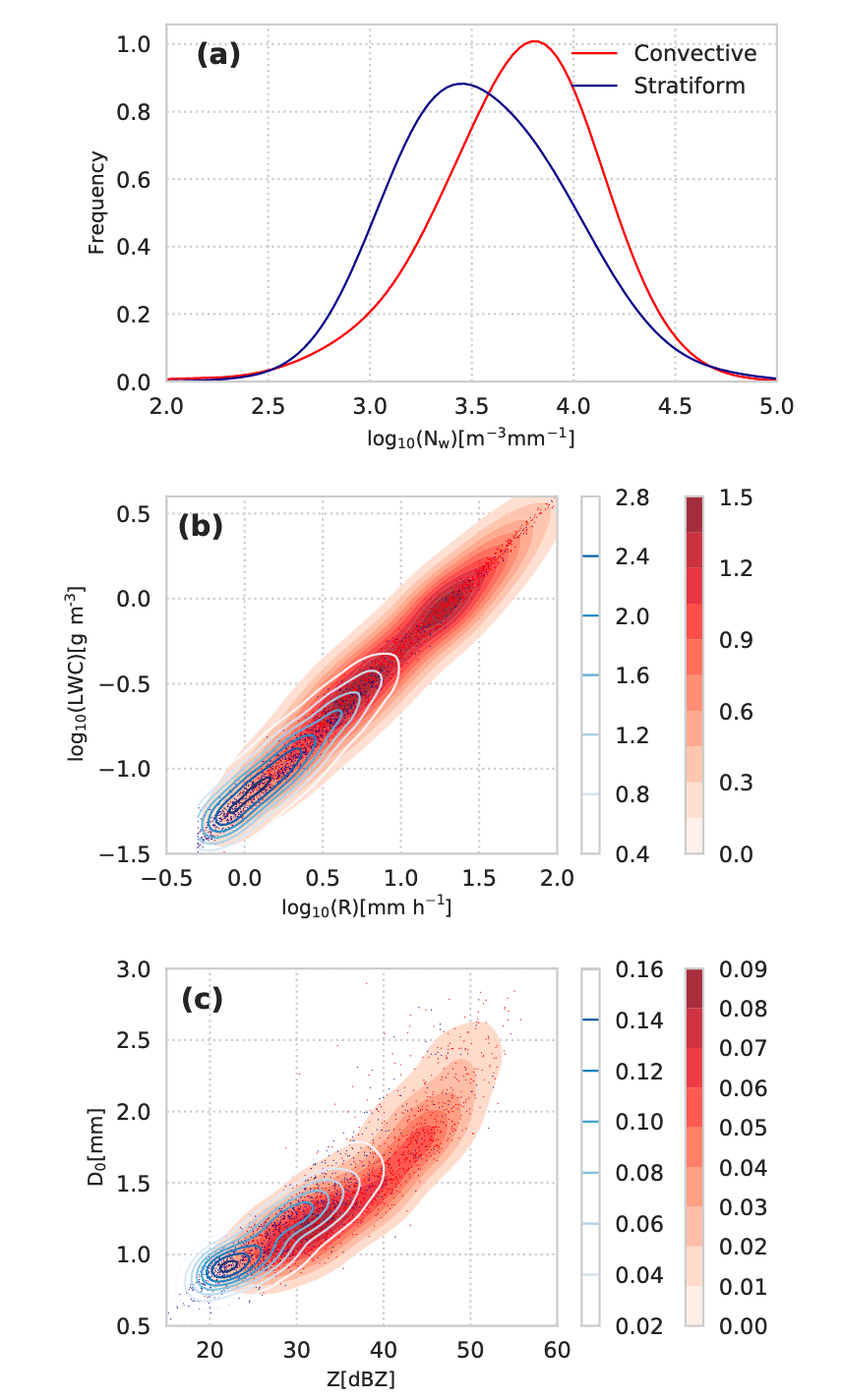New Precipitation Value-Added Product Released for Video Disdrometers
Published: 17 November 2021

A new precipitation value-added product (VAP) for the Atmospheric Radiation Measurement (ARM) user facility provides quality-controlled measurements of drop size distributions (DSDs), rain rates, and polarimetric radar-equivalent measurements. The Video Disdrometer Quantities (VDISQUANTS) VAP capitalizes on video disdrometer observations from ARM fixed and mobile sites.
DSD measurements from disdrometers can be used to estimate key precipitation properties, including the rainfall rate, number concentration of drops, and mean raindrop size information. For these quantities to be useful in model evaluation, radar monitoring, or other activities, disdrometer data sets require careful quality control and processing. VDISQUANTS uses standard methods adapted from the literature to filter spurious drops and extract important microphysical quantities of parameterized DSDs (e.g., gamma/exponential DSD assumptions and fitting).
In support of radar-based research interests and monitoring, this VAP also estimates radar-equivalent dual-polarization quantities (e.g., Reflectivity Factor Z, Differential Reflectivity ZDR). VDISQUANTS computes these quantities by using the T-matrix scattering technique and several wavelength, temperature, and drop shape assumptions.
VDISQUANTS production data are routinely processed for the Southern Great Plains (SGP) and Eastern North Atlantic (ENA) atmospheric observatories. The VAP is available starting from October 2014 at the ENA and October 2016 at the SGP. VDISQUANTS data are also available from the 2018–2019 Cloud, Aerosol, and Complex Terrain Interactions (CACTI) deployment in Argentina’s Sierras de Córdoba mountain range.
Scientists can use the VDISQUANTS data now. More information on VDISQUANTS can be found on the VAP web page.
To ask questions or provide feedback about the data, please contact ARM translator Scott Giangrande or instrument mentor Dié Wang.
Access VDISQUANTS data in the ARM Data Center. (Go here to request an account to download the data.)
Implementations of the algorithms are from PyDisdrometer (PyDSD), an open-source Python library for working with disdrometer data (Hardin and Guy 2017). Additional testing and ARM data set examples are from Wang et al. (2018).
To cite the VDISQUANTS data, please use doi:10.5489/1592683.
References: Hardin J and N Guy. 2017. PyDSD, http://doi.org/10.5281/zenodo.9991.
Wang D, S Giangrande, M Bartholomew, J Hardin, Z Feng, R Thalman, and L Machado. 2018. “The Green Ocean: precipitation insights from the GoAmazon2014/5 experiment.” Atmospheric Chemistry and Physics, 18(12), 10.5194/acp-18-9121-2018.
Keep up with the Atmospheric Observer
Updates on ARM news, events, and opportunities delivered to your inbox
ARM User Profile
ARM welcomes users from all institutions and nations. A free ARM user account is needed to access ARM data.


















